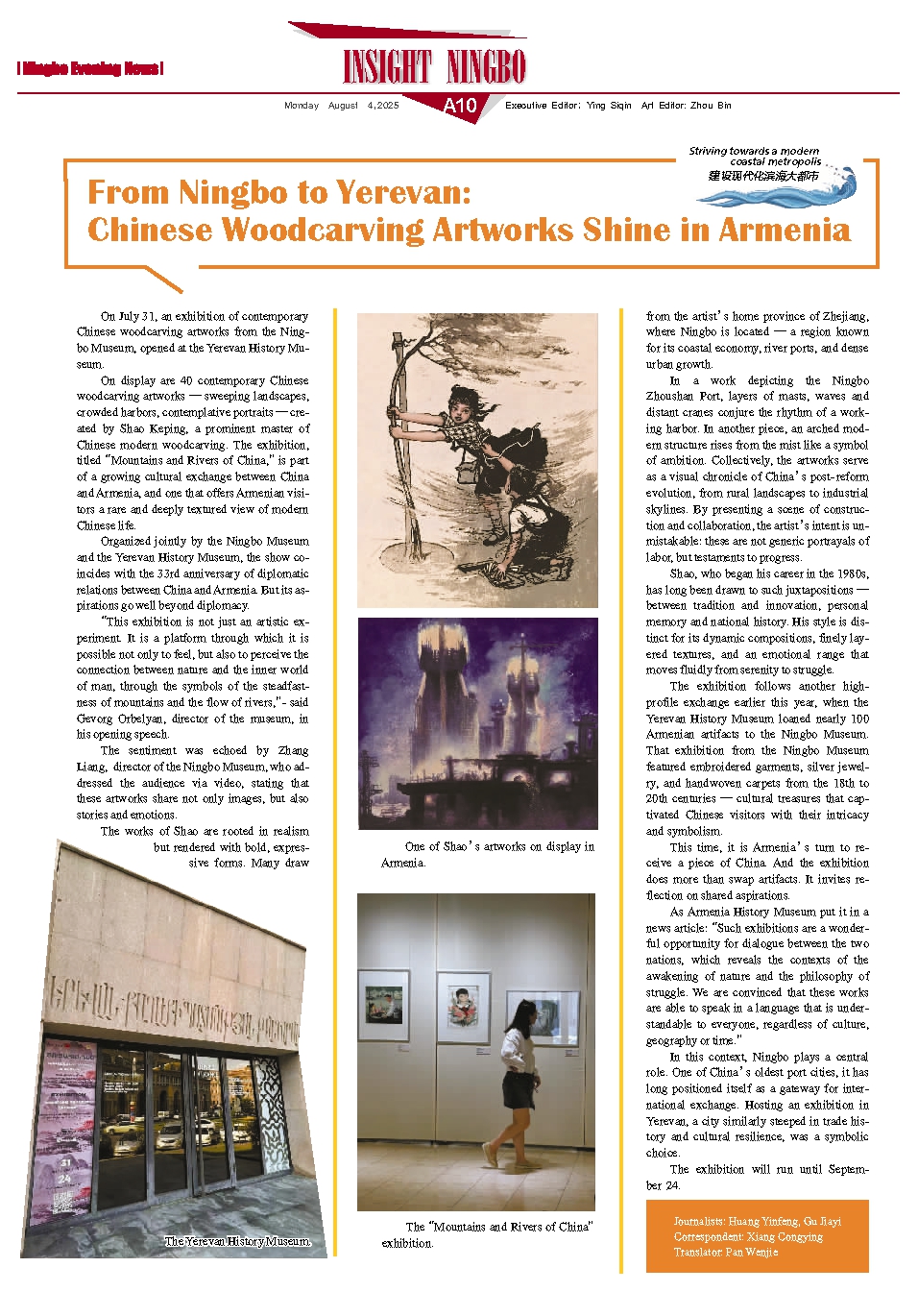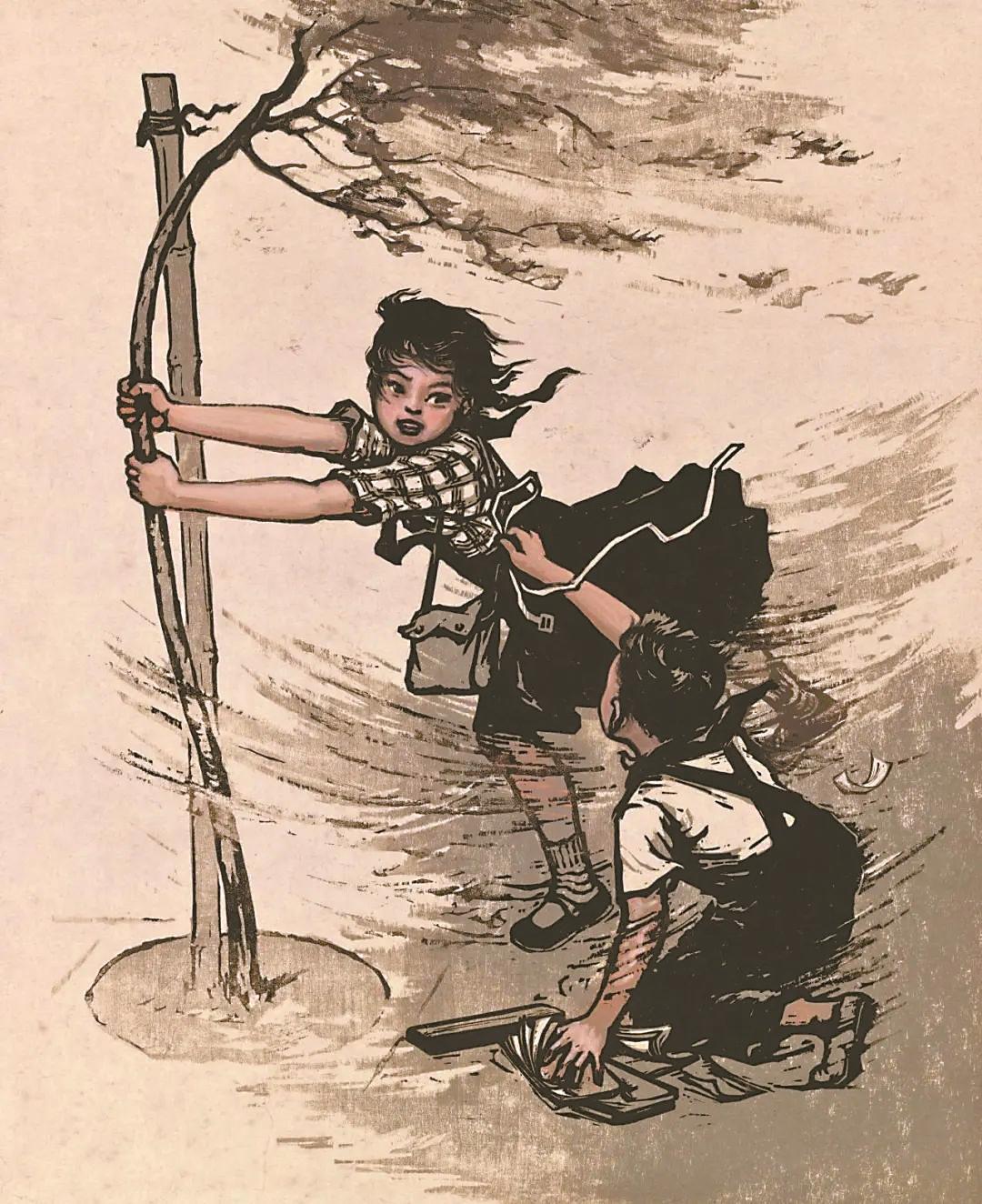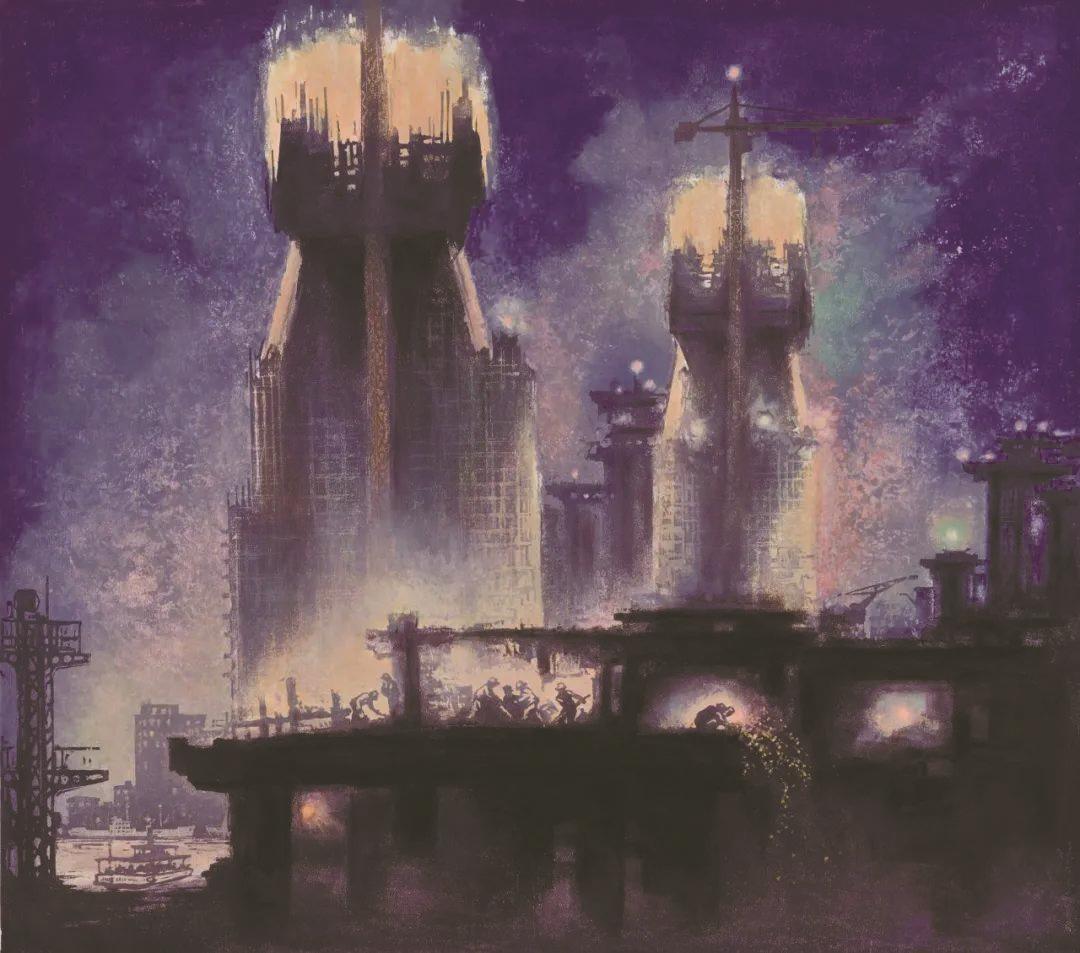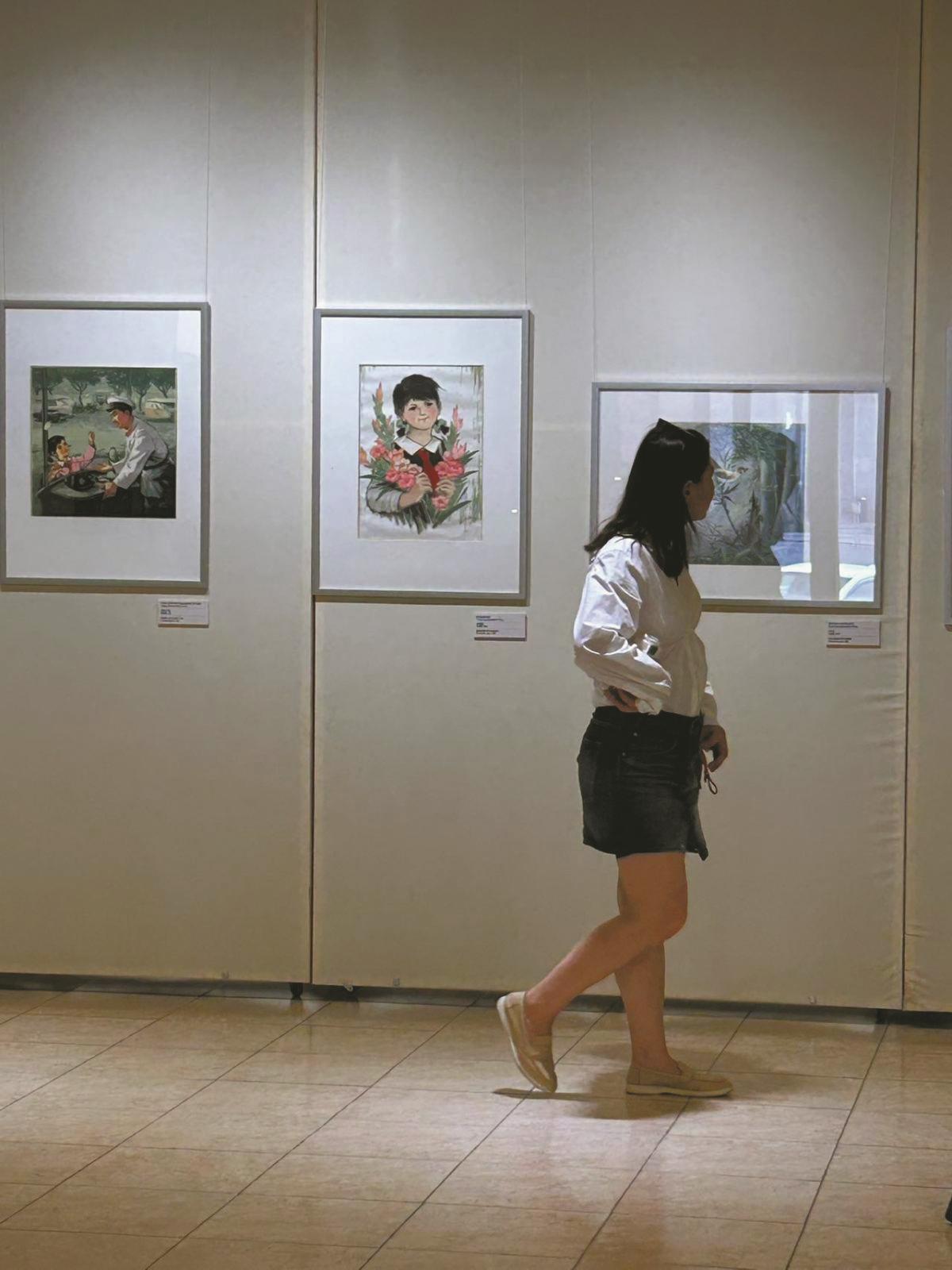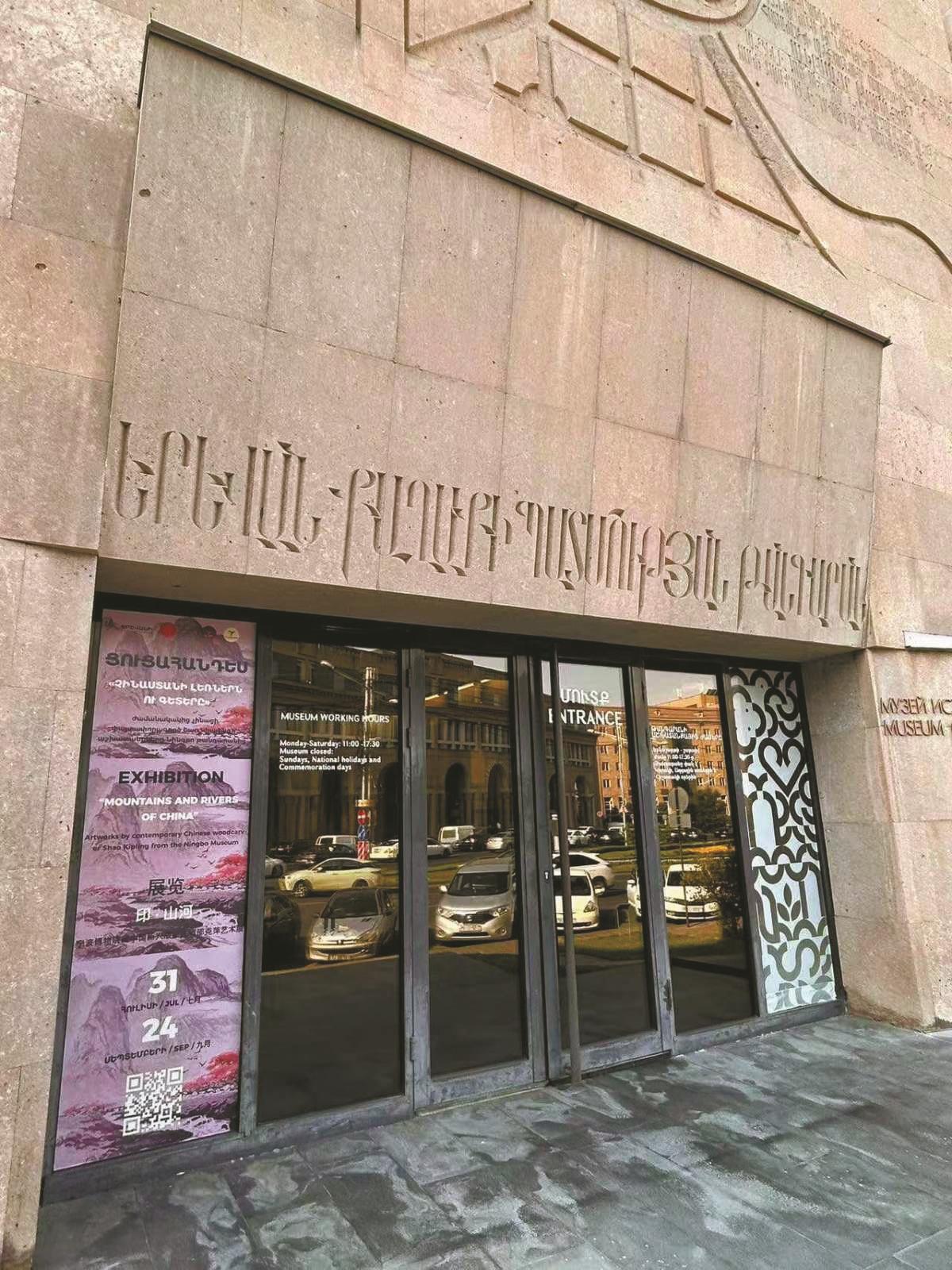On July 31, an exhibition of contemporary Chinese woodcarving artworks from the Ningbo Museum, opened at the Yerevan History Museum.
On display are 40 contemporary Chinese woodcarving artworks — sweeping landscapes, crowded harbors, contemplative portraits — created by Shao Keping, a prominent master of Chinese modern woodcarving. The exhibition, titled “Mountains and Rivers of China,” is part of a growing cultural exchange between China and Armenia, and one that offers Armenian visitors a rare and deeply textured view of modern Chinese life.
Organized jointly by the Ningbo Museum and the Yerevan History Museum, the show coincides with the 33rd anniversary of diplomatic relations between China and Armenia. But its aspirations go well beyond diplomacy.
“This exhibition is not just an artistic experiment. It is a platform through which it is possible not only to feel, but also to perceive the connection between nature and the inner world of man, through the symbols of the steadfastness of mountains and the flow of rivers,”- said Gevorg Orbelyan, director of the museum, in his opening speech.
The sentiment was echoed by Zhang Liang, director of the Ningbo Museum, who addressed the audience via video, stating that these artworks share not only images, but also stories and emotions.
The works of Shao are rooted in realism but rendered with bold, expressive forms. Many draw
from the artist’s home province of Zhejiang, where Ningbo is located — a region known for its coastal economy, river ports, and dense urban growth.
In a work depicting the Ningbo Zhoushan Port, layers of masts, waves and distant cranes conjure the rhythm of a working harbor. In another piece, an arched modern structure rises from the mist like a symbol of ambition. Collectively, the artworks serve as a visual chronicle of China’s post-reform evolution, from rural landscapes to industrial skylines. By presenting a scene of construction and collaboration, the artist’s intent is unmistakable: these are not generic portrayals of labor, but testaments to progress.
Shao, who began his career in the 1980s, has long been drawn to such juxtapositions — between tradition and innovation, personal memory and national history. His style is distinct for its dynamic compositions, finely layered textures, and an emotional range that moves fluidly from serenity to struggle.
The exhibition follows another high-profile exchange earlier this year, when the Yerevan History Museum loaned nearly 100 Armenian artifacts to the Ningbo Museum. That exhibition from the Ningbo Museum featured embroidered garments, silver jewelry, and handwoven carpets from the 18th to 20th centuries — cultural treasures that captivated Chinese visitors with their intricacy and symbolism.
This time, it is Armenia’s turn to receive a piece of China. And the exhibition does more than swap artifacts. It invites reflection on shared aspirations.
As Armenia History Museum put it in a news article: “Such exhibitions are a wonderful opportunity for dialogue between the two nations, which reveals the contexts of the awakening of nature and the philosophy of struggle. We are convinced that these works are able to speak in a language that is understandable to everyone, regardless of culture, geography or time.”
In this context, Ningbo plays a central role. One of China’s oldest port cities, it has long positioned itself as a gateway for international exchange. Hosting an exhibition in Yerevan, a city similarly steeped in trade history and cultural resilience, was a symbolic choice.
The exhibition will run until September 24.
Journalists: Huang Yinfeng, Gu Jiayi
Correspondent: Xiang Congying
Translator: Pan Wenjie
